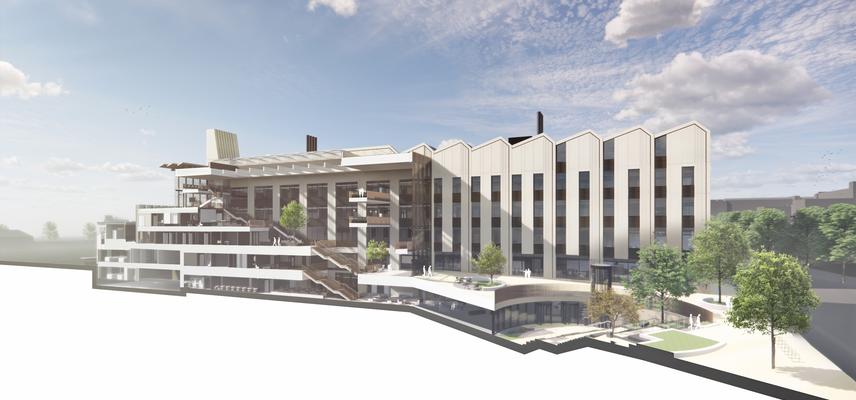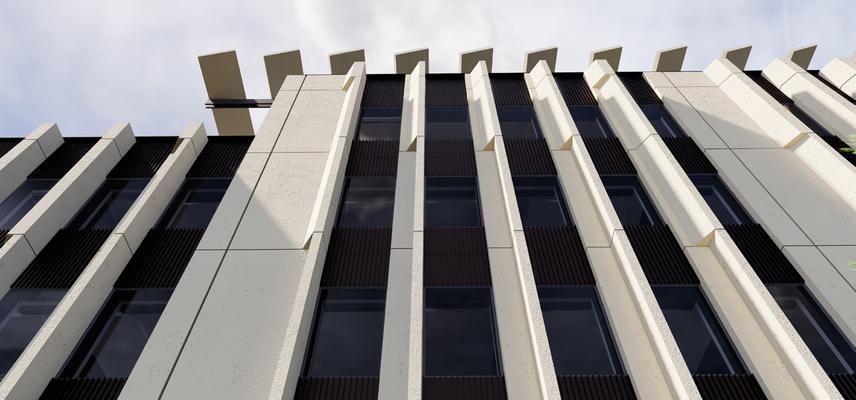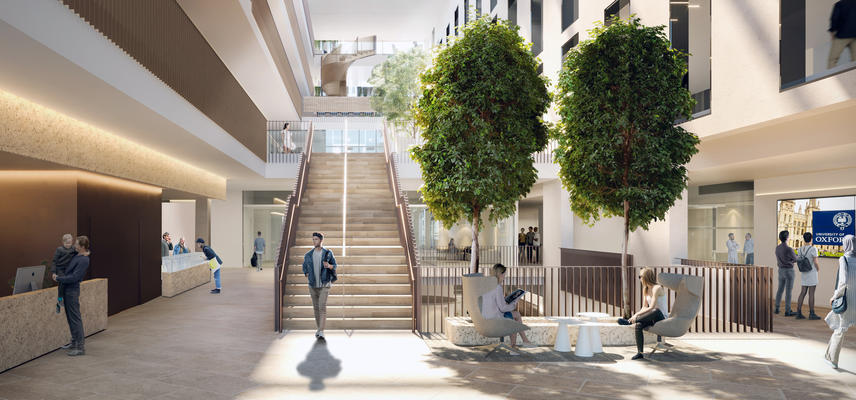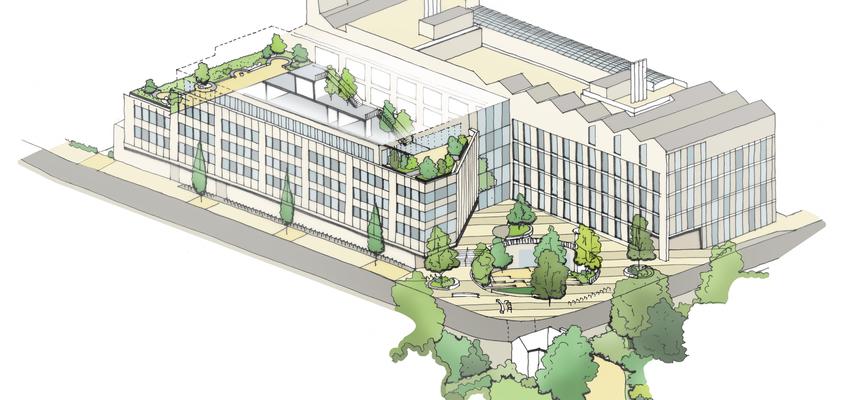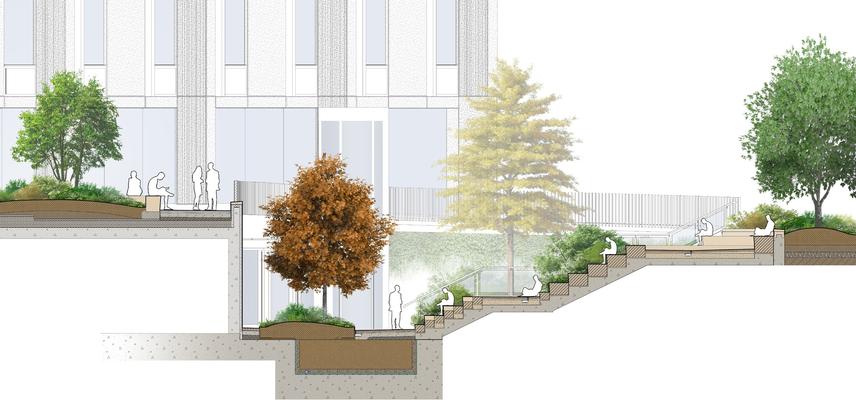Design Concepts
The design concept aims to enhance the quality and opportunities of the surrounding area while relating to Oxford’s historic and protected skyline and context. The creation of a new public realm and wider pavement areas enhance the connection with the community and opens a window into science and education. This public space extends University Parks and its diverse selection of trees into the site and allows visitors and occupants to enter the building at its centre shortening routes within and improving connectivity within the building.
A central terraced atrium space - a continuation of the public plaza flooded by natural light - will offer a place for working and collaborating. It links the public realm in the north with a south facing roof terrace, while continuing into the lower ground which in turn is connected to the new public plaza via a sunken stepped courtyard. External space for building occupants is never more than one floor away. Those terraces combined with internal shared space like a roof top café activate the building on various sides and levels when viewed from its surrounding.
Two blocks with different floor to floor height help maximise efficiency: a modular concrete structure for laboratories and write-up offices (flexible and adaptable), is paired with a terraced steel structure office block focussed around workplace flexibility and is suitable for EP volunteer-facing observation spaces.
With a limited budget available, the design aims to carefully balance the functional needs of a world class research facility with occupant wellness, creation of public amenities, long-term adaptability, and sustainability goals build around a Passive House approach.
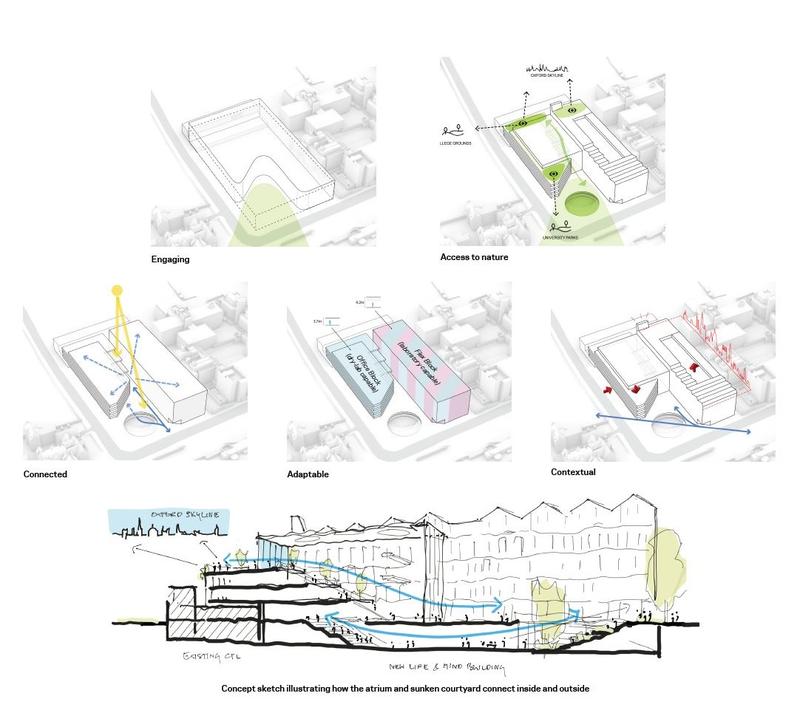
Please use the links below to find out more about the concepts behind various different elements of the LaMB design.
Façade concept
Façade concept
Interior design concepts
Interior design concepts
Public realm and landscape
Public realm and landscape
Transport, access & logistics
Transport, access & logistics
Sustainability

